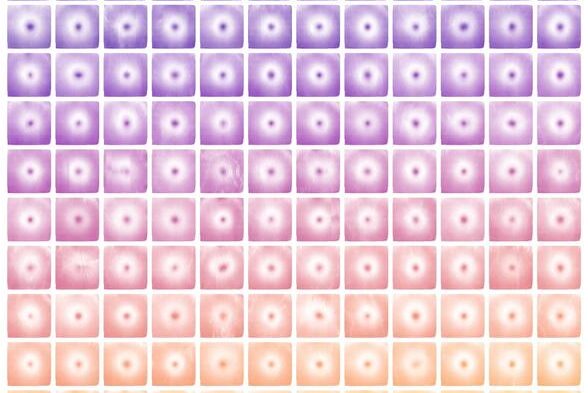The condition of the eye’s retina, and in particular the measure of retinal thickness (influenced by factors such as the amount of vascularization, atrophy, ischemic damage, and the presence or absence of rod and cone cells) is not only an indicator of retinal health. It can also be an indicator of more systemic diseases. Indeed, AI-enabled retinal imaging-based disease prediction models have been developed for neuropsychiatric disorders such as schizophrenia, cognitive decline, and cardiovascular disease.
Now, researchers have conducted one of the largest eye studies to date to reveal new insights into retinal thickness, highlighting its potential in the early detection of diseases like type 2 diabetes, dementia, and multiple sclerosis. The study analyzed over 50,000 eyes and produced maps of the retina to better understand how retinal differences link to various diseases. The findings open up new possibilities for using routine eyecare imaging as a disease screening tool.
This work is published in Nature Communications in the paper, “Multi-omic spatial effects on high-resolution AI-derived retinal thickness.”
As part of routine eyecare, retinal thickness measurements are taken using optical coherence tomography (OCT). Researchers at the Walter and Eliza Hall Institute of Medical Research (WEHI) in Australia used one of the largest, systematically-collected OCT datasets in the world (from the UK Biobank) in conjunction with a convolutional neural network to produce “fine-scale retinal thickness measurements across > 29,000 points in the macula, the part of the retina responsible for human central vision.”

Analysis of “common genomic variants, metabolomic, blood and immune biomarkers, disease PheCodes and genetic scores across a fine-scale macular thickness grid, reveals multiple novel genetic loci including four on the X chromosome; retinal thinning associated with many systemic disorders including multiple sclerosis; and multiple associations to correlated metabolites that cluster spatially in the retina.”
The results created 50,000 maps with measurements at over 29,000 locations across the retina, identifying retinal thinning relating to 294 genes that play an important role in disease.
By developing maps that could be used to link retinal thinning to a range of diseases, as well as identifying new genetic factors that influence retinal thickness, the work demonstrated that the retina provides a window to human health. More specifically, the authors noted that retinal thinning is “intricately related to a plethora of factors, spanning the genome, metabolites, blood traits, and diseases, with the parafoveal area most enriched for associations.” Most notably, the findings suggest that reduced retinal thinning is highly associated with MS.
Many diseases are linked to degeneration or disruption of the neural system, including neurodegenerative conditions such as dementia. Globally, neurological conditions alone are one of the leading causes of disability and illness, with over three billion people, or 43% of the world’s population living with a brain-related condition.
Vicki Jackson, PhD, a senior postdoctoral researcher at WEHI said the findings broaden the horizons for using retinal imaging as a doorway into the central nervous system, to help manage disease.
“We’ve shown that retinal imaging can act as a window to the brain, by detecting associations with neurological disorders like multiple sclerosis and many other conditions,” said Jackson. “Our maps’ fine-scale measurements reveal critical new details about connections between retinal thinning and a range of common conditions.”
The study also identified new genetic factors that influence retinal thickness, which are likely to play a role in the growth and development of a person’s retina.
“This research underscores the potential for retinal thickness to act as a diagnostic biomarker to aid in detecting and tracking the progression of numerous diseases. We can now pinpoint specific locations of the retina which show key changes in some diseases.”
Melanie Bahlo, PhD, a lab head at WEHI, said past studies had indicated correlations between retinal thickness and disease, but her team’s AI-powered discoveries shed deeper light on the complex spatial anatomy of the retina and its role in disease. The research reinforces the growing field of oculomics (using the eye to diagnose health conditions) as an emerging and noninvasive approach for predicting and diagnosing diseases.



